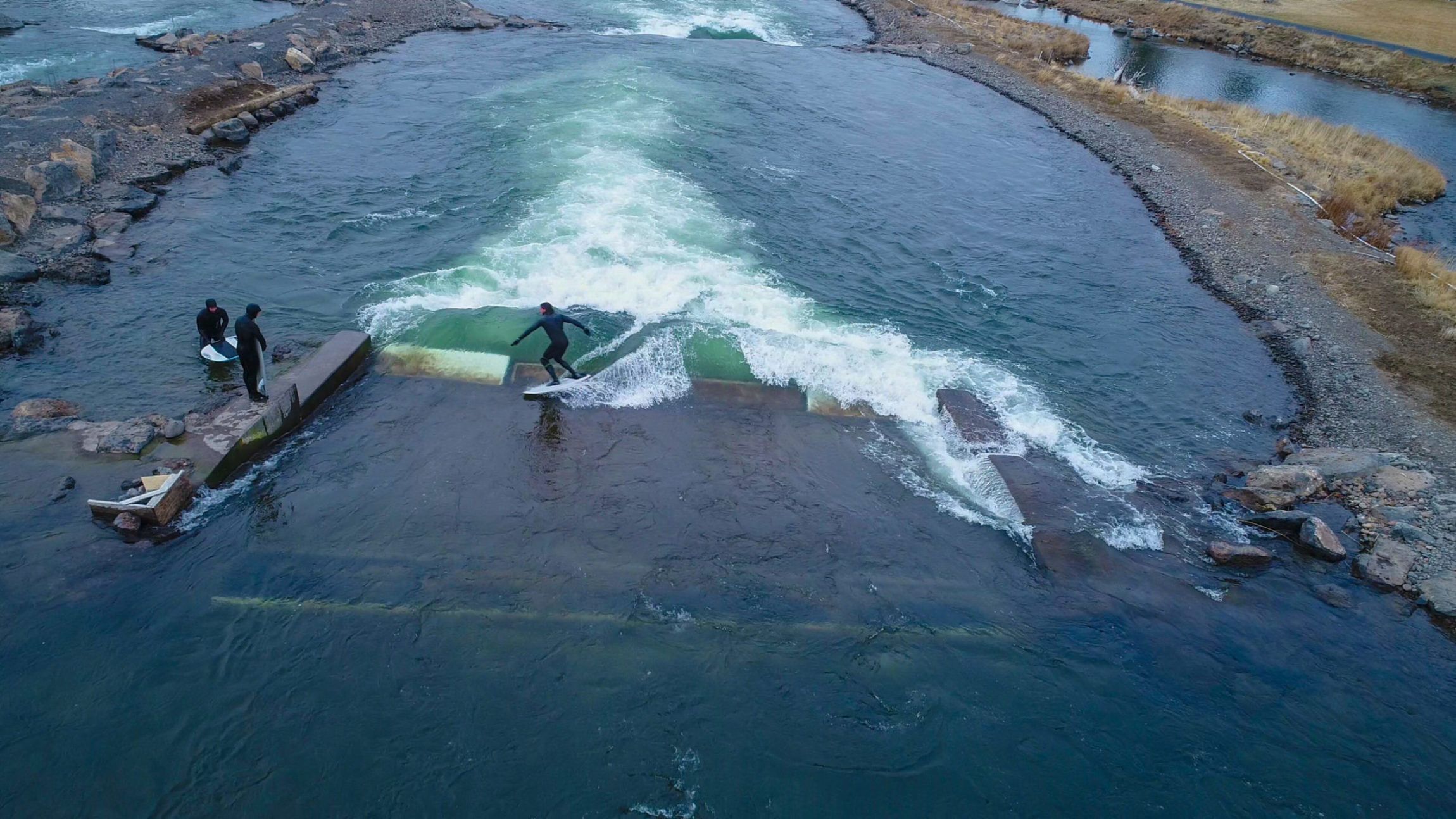
A surfing lineup at Bend’s River Wave looks a little different than at the ocean.
Instead of sitting on their boards in the water and waiting for a wave to build and paddle into, wetsuit-clad river surfers clutch their boards and stand in line for their turn on a manmade river wave.
The novelty wave is located in the Bend Whitewater Park at the Deschutes River near the Old Mill District. River surfing is popular among ocean surfers, but offers a different experience due in part to wave mechanics.
“In the ocean, the energy of the wave is pushing you toward the beach, whereas with the river wave the water is moving toward you,” explained Tim Gross, a seasoned river and ocean surfer and physical therapist at Rebound’s East Bend Clinic.
“There’s definitely a learning curve going from ocean to river surfing,” he added.
 While riding a wave can be exhilarating, any form of surfing has its inherent dangers. Before attempting to surf the river wave, it’s important to be prepared for the demands — and risks — of the sport.
While riding a wave can be exhilarating, any form of surfing has its inherent dangers. Before attempting to surf the river wave, it’s important to be prepared for the demands — and risks — of the sport.
“From a safety standpoint, river surfers need to know how to move in the water – to propel themselves out of the current and back to shore,” explained Gross. “Being a confident swimmer is crucial.”
Water conditions (whether the river is at high, medium or low flow) also affect safety. “You’re much more likely to get injured when the flow is low because the water is shallow,” Gross said. He recommends wearing a helmet in case of impact against the concrete sides and bottom of the wave or one’s own surfboard.
Bend’s River Wave surfers should also exercise caution if they choose to wear an ankle leash, as they can get caught on rocks and other debris in the water, noted Gross. He suggests wearing a waist leash with a quick release on the body as a safer alternative.
Traumatic injuries are also a risk, said Gross, and knowing how to fall safely is key. Visits to an orthopedic specialist or urgent care provider due to river surfing injuries are not uncommon; landing on a stiff outstretched arm can lead to hand, wrist and shoulder injuries. Staying physically fit and maintaining good balance through dryland exercises can lessen the likelihood of injury from a fall, Gross added.
Overuse injuries to the low back, hips and knees are also common in those who frequent the wave. “Surfing is a very asymmetrical sport, with most surfers always leading with the same foot,” explained Gross. “The mechanics of how you shift weight from one foot to the other will affect how you’re stressing your spine, hips and knees.”
For chronic injuries, “the most important thing is to identify what is causing that injury in the first place,” said Gross. A physical therapist can screen patients for underlying issues such as muscle weakness (patients with preexisting orthopedic conditions should consult a medical professional before river surfing).
Physical therapists can help surfers regain the mobility, strength, balance, coordination and safety needed to master the river wave pain-free.
Balance and coordination also come in handy before and after surfing. “Sometimes the hardest part is getting in and out of the wetsuit,” said Gross with a smile.
